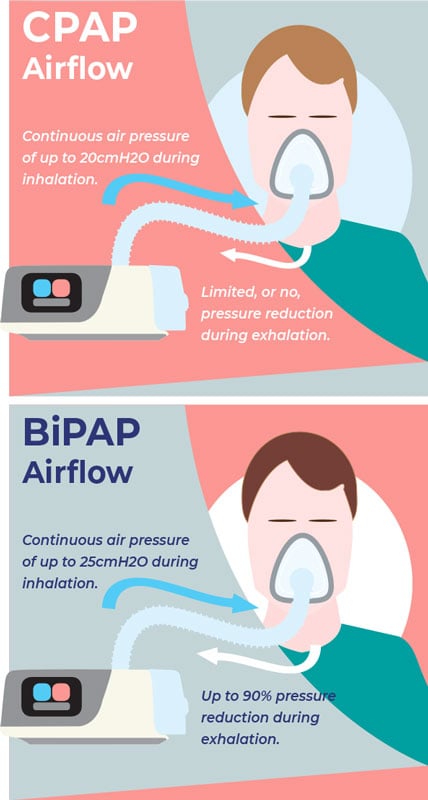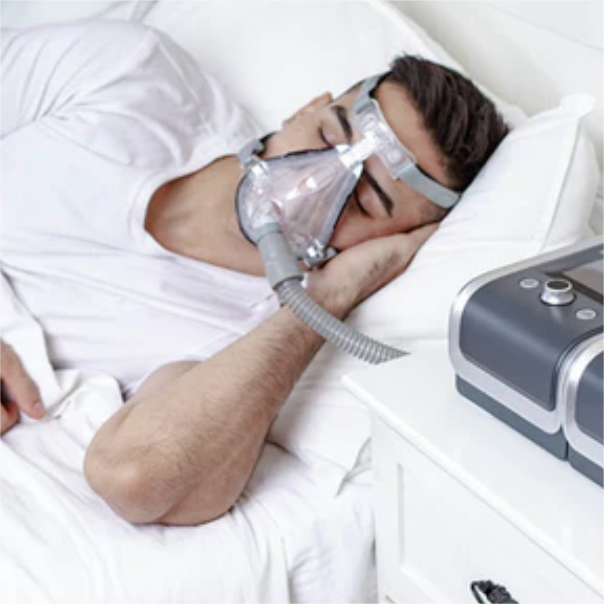Top-Rated BiPAP Rental Business You Can Depend On
Top-Rated BiPAP Rental Business You Can Depend On
Blog Article
Bipap vs. CPAP: Which Is the most effective for Your Sleep Disorder?
When navigating the intricacies of sleep conditions, the selection between BiPAP and CPAP treatment is a critical factor to consider. While CPAP provides a steady airflow appropriate for obstructive rest apnea, BiPAP's twin pressure settings might boost convenience for those with even more complex respiratory problems.
Comprehending Sleep Disorders
Rest disorders incorporate a series of problems that disrupt typical sleep patterns, impacting both the quality and duration of remainder. These disorders can show up in numerous kinds, including sleeplessness, sleep apnea, narcolepsy, restless leg syndrome, and parasomnias. Each problem offers one-of-a-kind difficulties, usually bring about considerable daytime tiredness, cognitive disability, and psychological disturbances.
Sleeping disorders is identified by trouble falling or remaining asleep, while rest apnea includes duplicated interruptions in breathing during sleep, typically resulting in fragmented remainder. Narcolepsy, on the various other hand, is marked by excessive daytime drowsiness and unexpected sleep assaults. Troubled leg disorder triggers uncomfortable experiences in the legs, motivating an unmanageable impulse to relocate them, which can also impede the capability to go to sleep.
The impact of sleep conditions extends beyond private health and wellness, affecting total efficiency, partnerships, and lifestyle. Understanding the certain nature of each disorder is important for reliable medical diagnosis and treatment. As rest health becomes significantly acknowledged as an essential part of general wellness, attending to these disorders is essential for improving both sleep top quality and day-to-day performance.
Just How CPAP Works
Constant Favorable Air Passage Stress (CPAP) therapy is often utilized as a primary treatment for obstructive sleep apnea (OSA) The device of CPAP includes using a maker that provides a constant stream of air with a mask put on throughout rest. This air movement maintains positive pressure in the airway, avoiding the collapse or blockage of the throat that can happen throughout rest.
When a client takes in, the CPAP device supplies a continuous flow of air, guaranteeing that the respiratory tract continues to be open - BiPAP Rental. This not only alleviates the signs and symptoms of OSA, such as snoring and interfered with rest patterns, however also lowers the associated health risks, including cardio problems and daytime exhaustion
The stress settings on a CPAP device can be personalized to fulfill individual client demands, usually identified via a sleep study. Clients usually undergo titration researches to discover the optimum stress degree for their one-of-a-kind condition. Regular follow-up and modifications may be necessary to make sure efficiency and convenience. In general, CPAP therapy has actually been revealed to dramatically boost the top quality of sleep and total health and wellness for people struggling with obstructive rest apnea.
How BiPAP Functions
BiPAP, or Bilevel Positive Airway Stress, is a specific kind of non-invasive ventilation that is especially valuable for people with conditions such as complex rest apnea or breathing problems. Unlike CPAP, which provides a continual stream of air at a single stress, BiPAP supplies 2 unique pressure settings: a higher inspiratory pressure for breathing and a reduced expiratory stress for exhalation. This dual-pressure approach enables easier breathing, reducing the effort needed during exhalation.
The gadget runs via a mask fitted over the nose or mouth, connected to an equipment that generates air pressure. When the individual inhales, the machine supplies the higher stress to assist with air flow, making sure that the respiratory tract stays open. Upon exhalation, the maker automatically decreases the pressure, making it much more comfy for the person to breathe out.

Trick Differences In Between BiPAP and CPAP

In contrast, BiPAP (Bilevel Positive Air passage Stress) uses 2 different pressure setups: one for inhalation and a lower one for exhalation. This twin stress system permits for more comfortable breathing, particularly for individuals that battle with exhaling versus a constant pressure. BiPAP is commonly recommended for patients with complicated sleep apnea, persistent obstructive pulmonary illness (COPD), or those that call for additional assistance during rest.
In addition, the intricacy of BiPAP tools typically causes a greater price and calls for more careful titration than CPAP. BiPAP Rental. Understanding these key distinctions can aid in recognizing which gadget might be a lot more suitable for certain rest disorders, setting the foundation for enlightened therapy decisions
Picking the Right Therapy
The decision between BiPAP and CPAP treatment largely hinges on the details characteristics of the rest disorder, the client's general wellness, and their convenience with the tool. CPAP, which delivers a constant stream of air, is typically suggested for obstructive rest apnea (OSA)
Conversely, BiPAP supplies two levels of pressure: one for inhalation and a reduced one for exhalation. This dual stress system is helpful for people with intricate rest apnea or those that experience trouble breathing out against a continual stress. In addition, BiPAP is frequently recommended for people with respiratory problems, such as chronic obstructive pulmonary disease (COPD), where varying pressure setups can enhance comfort and compliance.
Ultimately, a comprehensive evaluation by a rest specialist, including a rest research, can aid determine which treatment aligns finest with the person's needs. Variables such as comfort, ease of use, and specific clinical problems should additionally be considered to optimize therapy outcomes.
Verdict
In summary, both BiPAP and CPAP serve distinctive purposes in the administration of sleep conditions. CPAP is reliable for obstructive sleep apnea through consistent air flow, while BiPAP provides dual pressure setups that improve convenience for those with intricate rest apnea or respiratory system problems. The choice in between these treatments must be guided by individual needs and conditions, necessitating a detailed analysis by a sleep specialist to make certain ideal therapy results and enhanced quality of rest.

In general, CPAP treatment has been revealed to considerably boost the quality of rest and overall wellness for individuals experiencing from obstructive rest apnea.
BiPAP is usually recommended for patients with complicated sleep apnea, chronic obstructive pulmonary illness (COPD), or those who require added support during sleep.
CPAP is effective for obstructive rest apnea via consistent air flow, while BiPAP uses twin stress setups that improve convenience for those with intricate rest apnea or respiratory system problems.
Report this page